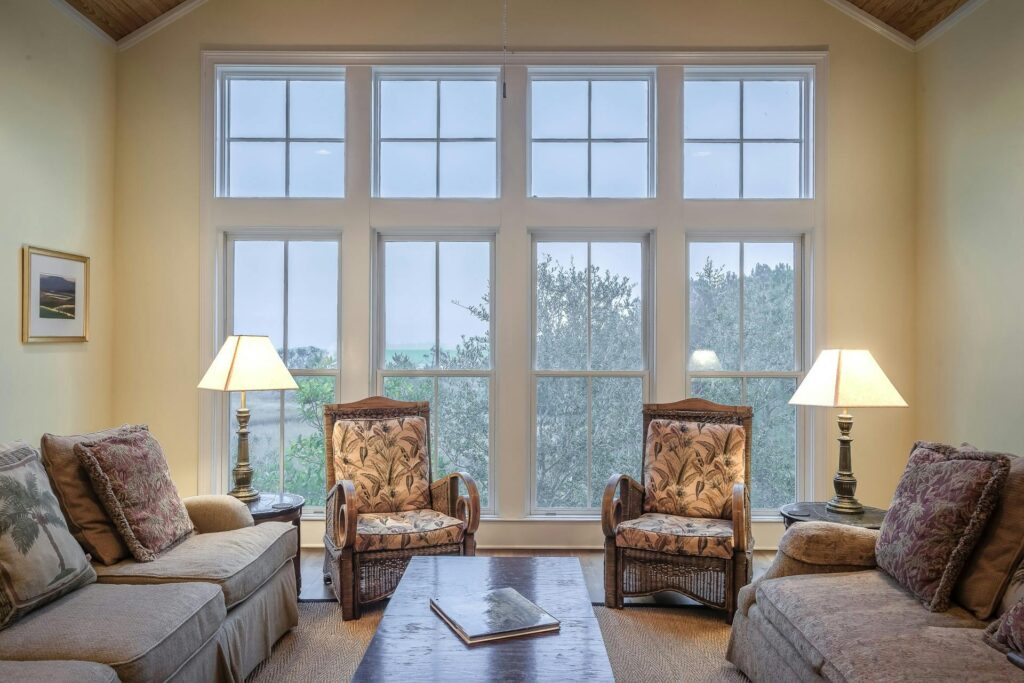In this article, you will discover the most exciting trends 2025 in window design for modern spaces that blend functionality, sustainability, and stunning aesthetics. From the latest materials and smart technologies to breathtaking styles that redefine natural light and space, these emerging designs promise to revolutionize how we experience our homes and workplaces.
We’ll explore how minimalist frames and floor-to-ceiling glass are creating seamless connections to nature, why energy-efficient windows are no longer optional but essential, and how customizable smart features are making windows an integral part of our daily lives. Whether you’re an architect, interior designer, or homeowner seeking to elevate your space, understanding the trends 2025 in window design for modern spaces will give you a clear advantage in creating environments that are both beautiful and future-ready.
Get ready to dive into the cutting edge of window innovation and see how the right design can redefine your relationship with light, air, and the world outside.
Table of Contents
ToggleKey Takeaways
- Embrace Floor-to-Ceiling Glass: Maximizes natural light and fosters seamless indoor-outdoor connections.
- Prioritize Energy Efficiency: Choose triple-glazed, low-E coatings and insulated frames to cut heating/cooling costs up to 15%.
- Integrate Smart Features: Automated tinting, motorized shades, and sensors enhance comfort, privacy, and convenience.
- Opt for Minimalist Frames: Ultra-thin aluminum or composite frames create sleek sightlines and modern appeal.
- Leverage Sustainable Materials: Recycled aluminum, responsibly sourced wood, and eco-friendly sealants support green building goals.
- Customize Shapes and Sizes: Geometric, corner, and asymmetrical windows add architectural interest and personalize your space.
- Incorporate Biophilic Design: Planters, operable skylights, and strategic glazing promote health and well-being through nature connection.
- Plan for Maintenance: Regular seal checks, glass cleaning, and software updates for smart systems ensure long-term performance.
Why Trends 2025 in Window Design for Modern Spaces Are More Important Than You Think
When we talk about the trends 2025 in window design for modern spaces, we’re diving into a realm that blends architectural innovation, sustainability, and aesthetic evolution. Windows are no longer just functional elements letting light into a room, they are transformative features that shape how we interact with our indoor and outdoor environments.
But what exactly are these trends, and why should they matter to homeowners, architects, and designers alike? The window design landscape in 2025 is set to redefine modern living, emphasizing energy efficiency, smart technology integration, and adaptable styles that complement multifaceted lifestyles.
Why are trends 2025 in window design for modern spaces so crucial? One key reason is the rising demand for homes that are both sustainable and stylish. According to the U.S. Department of Energy, windows can account for up to 25-30% of residential heating and cooling energy use. With energy efficiency becoming a priority, the design of windows is evolving to minimize energy loss without compromising natural light or views.
Consider the rise of triple-glazed windows with low-emissivity coatings, which are among the hottest trends in 2025. These materials significantly reduce heat transfer, keeping homes warmer in winter and cooler in summer. Statistics show that homes investing in such advanced window solutions can decrease their energy bills by up to 15%, a considerable saving that also benefits the environment.
Beyond efficiency, trends 2025 in window design for modern spaces are embracing smart technology like automated tinting and integrated sensors. Imagine a window that adjusts its opacity throughout the day to reduce glare or enhance privacy, all controlled from your smartphone. This is not just convenience, it’s a revolution in how we experience natural light.
For a practical example, take the story of a San Francisco-based architect who renovated a mid-century modern home. By incorporating floor-to-ceiling smart windows that are part of the trends 2025 in window design for modern spaces, the project not only boosted the home’s market value by 20% but also cut energy consumption by nearly 30%, thanks to better insulation and smart shading.
In essence, the trends 2025 in window design for modern spaces represent more than just aesthetic upgrades; they reflect a holistic approach to better living, environmental responsibility, and cutting-edge technology. Staying informed about these trends ensures that any space can be transformed into a modern marvel of comfort and style.
How to Apply the 2025 Window Design Trends Step by Step
As we approach 2025, the window design trends for modern spaces are evolving rapidly, blending functionality with style. To help you integrate these trends seamlessly into your home or project, here is a detailed step-by-step guide on how to apply the 2025 window design trends effectively. By following these steps, you’ll enhance your living spaces with the latest innovations and aesthetics in window design.
Step 1: Understand the Core Tendencies of 2025 Window Design
Before diving into installation or renovation, familiarize yourself with the key trends shaping window design in 2025. These include:
– Maximized natural light: Large, expansive windows with minimal frames.
– Sustainability: Energy-efficient glazing and materials.
– Smart technology integration: Automated blinds, tinting, and sensors.
– Minimalist aesthetics: Sleek, clean lines with understated hardware.
– Customization: Tailored shapes and sizes to fit unique modern spaces.
Knowing these will guide every decision you make to align with current design trends without compromising functionality.
Step 2: Assess Your Space and Identify Needs
Evaluate your space’s layout, lighting conditions, and purpose. Ask yourself:
– How much natural light do I want?
– What is the orientation of the window? (South-facing windows require different treatment than north-facing.)
– Are privacy, ventilation, or insulation priorities?
– Can I integrate technology such as smart glass or sensors?
This analysis ensures that the windows you choose will not only look modern but also enhance the comfort and efficiency of your space.
Step 3: Select the Right Window Style and Materials
Based on your assessment, select window styles trending in 2025 that suit your needs. Popular options include:
– Floor-to-ceiling windows: Perfect for maximizing daylight.
– Corner windows: Add architectural intrigue and panoramic views.
– Sliding or folding glass doors: Ideal for indoor-outdoor living.
– Minimal frame aluminum or composite materials: For durability and a sleek look.
– Smart glass: Automatically adjusts tint for comfort and privacy.
Step 4: Incorporate Smart Technology Features
Modern windows in 2025 often come integrated with smart features. You can:
– Install automated blinds or shades that adjust based on sunlight.
– Use electrochromic glass, which tints on demand to reduce glare.
– Set up sensors to monitor temperature or humidity, optimizing climate control.
– Connect windows to your home automation system for seamless control via smartphone or voice commands.
These features elevate the function of windows, making your space smarter and more energy-efficient.
Step 5: Engage with a Professional Designer or Installer
Though DIY is tempting, working with specialists can ensure that your modern windows are installed correctly and meet the trendy aesthetic of 2025:
– They can provide precise measurements and custom design consultations.
– Help choose the best energy-efficient and smart materials.
– Ensure compliance with local building codes and safety standards.
Step 6: Plan Window Treatments and Accessories Thoughtfully
In 2025, minimalism is key, not just in the window itself but also in treatments. Opt for:
– Motorized, slimline blinds or shades that complement the clean-lined windows.
– Invisible or low-profile hardware.
– Window seats or built-in storage that harmonize with the large glass expanses.
Step 7: Maintain and Upgrade Regularly
To keep your windows looking and functioning like new, adhere to maintenance schedules:
– Clean glass with eco-friendly solutions.
– Update software for smart glass or automated systems.
– Inspect seals and insulation periodically.
Example: Applying 2025 Trend – Floor-to-Ceiling Smart Windows in a Living Room
Imagine a living room flooded with light through floor-to-ceiling smart windows facing south. By following the steps:
1. Assessed need for maximum light and privacy control.
2. Chose aluminum-framed, energy-efficient smart glass.
3. Installed automated electrochromic glazing that tints during peak sunlight.
4. Integrated blinds controlled via smartphone app.
5. Consulted a professional for precision fitting.
6. Selected minimalist motorized shades to complement the design.
7. Scheduled routine maintenance for glass and tech components.
This method created a luminous, energy-efficient, and visually striking room tailored to 2025’s window design trends.
By applying these steps carefully, you can transform your modern space with windows that aren’t just functional, but also embody the cutting-edge design trends of 2025. Remember to strike a balance between aesthetics and performance to achieve the perfect ambiance in your contemporary environment.

Tips for Embracing 2025 Trends in Modern Window Design:
✅ Go Big with Floor-to-Ceiling Glass: Maximizes natural light and creates seamless indoor-outdoor flow.
💡 Embrace Smart Glass Technology: Use windows that tint automatically for privacy and energy efficiency.
✅ Opt for Minimalist Frames: Thin, sleek frames in black or metallic finishes complement modern aesthetics.
💡 Integrate Energy-Efficient Materials: Choose triple-glazed or insulated glass to reduce heat loss/gain.
✅ Play with Asymmetrical Shapes: Break traditional rectangular molds with geometric or angled windows for a bold statement.
💡 Use Windows as Art Pieces: Incorporate stained glass or textured panes to add personality without overwhelming space.
✅ Consider Operable Skylights: These add ventilation and light in unexpected places, perfect for urban areas with limited wall space.
💡 Blend Indoor and Outdoor Views: Position windows to frame nature or cityscapes, bringing the outside vibe into interiors.
✅ Incorporate Privacy with Style: Use frosted or patterned glass selectively to maintain openness without compromising privacy.
💡 Focus on Sustainability: Select materials sourced responsibly and designs that support energy-saving goals for a greener home.
Key Concepts
When envisioning the trends for windows in 2025 for modern spaces, it’s essential to delve deeply into the foundational concepts that shape how windows evolve beyond mere openings to the outside world, becoming active, living components within architecture. Windows are no longer static features; they narrate a story of innovation, aesthetics, and environmental harmony.
Transparency as a Dialogue between Inside and Outside
Imagine windows as conversational bridges, subtle translators of the relationship between interiors and exteriors. The concept of transparency transcends physical clarity, it\’s about creating a seamless dialogue. Modern window trends in 2025 embrace this idea by experimenting with glass compositions and framing techniques that invite nature’s ever-changing tableau inside, while blurring the boundary that traditionally segregated spaces. This dialogue fosters a connection with natural light and views, infusing interiors with life and mood that shift with the outside world.
Minimalism with Maximum Impact
Minimalism in windows blurs the artful economy of design with expansive emotional impact. Think of windows in modern homes as poems written in glass and metal, where every line, curve, and corner is meticulously pared down to amplify openness and function. The sleek, almost bare-bones designs anticipated in 2025 shed unnecessary ornamentation, opting instead for expansive glass panels and ultra-thin frames that maximize panoramic views and invite sunlight to fill every corner. This minimalist philosophy transforms windows into framed art pieces, carefully curated to capture nature’s artworks, whether a stormy sky or a tranquil garden.
Sustainability as a Living Principle
Windows in 2025 embody sustainability not only as a feature but as an intrinsic principle woven into their design DNA. They act like the lungs of modern buildings, breathing life and conserving energy simultaneously. Technologies such as triple glazing, smart tinting, and eco-friendly framing materials create a dynamic relationship with the environment. Imagine them functioning like a chameleon, adjusting opacity and insulating quality based on sunlight intensity and temperature changes, thereby reducing energy consumption. This sustainability concept elevates windows from passive architectural elements to active participants in ecological stewardship.
Integration of Technology: Windows as Intelligent Interfaces
The concept of windows evolving into intelligent interfaces is at the heart of 2025 design trends. Picture your window as a digital canvas or a responsive membrane, capable of interacting with inhabitants and adjusting environmental conditions through embedded sensors and automation. These “smart windows” exemplify a fusion of technology and design, offering dynamic light control, privacy settings, and even visual displays. They blur traditional boundaries between architecture and technology, turning everyday windows into adaptive, interactive experiences that respond to human needs and external stimuli in real time.
Customization and Personal Expression
In the future of window design, personalization is more than a preference, it’s a key to emotional resonance within living spaces. Windows become tailored reflections of individual lifestyle and aesthetic sensibility. Envision a concept where modular components allow occupants to create unique designs, sizes, and shapes that conform to personal and spatial narratives. This idea resonates deeply with a modern ethos that values identity and comfort, making windows portals of self-expression beyond their function of framing light and air.
Biophilic Design: Windows as Nature’s Gateway
A central pillar in the 2025 window narrative is biophilic design, which emphasizes humanity’s innate connection to nature. Windows are gateways through which this connection is nurtured. Imagine them as living frames that not only admit sunlight but also optimize natural ventilation, integrate greenery through adjoining planters or green walls, and facilitate visual and physical comfort rooted in natural elements. This concept envisions windows as orchestrators of sensory experiences, inviting the rhythmic cycles of nature indoors, contributing to mental wellness and harmony.
The Fluidity of Form and Function
Gone are the days when windows were merely rectangular and fixed in place. The emerging concept in 2025 portrays windows as fluid forms morphing effortlessly according to architectural whims and functional demands. Think of windows as living sculptures, bending, folding, or stretching to create dynamic facades and adjustable spatial barriers. This fluidity speaks a language of adaptability and innovation, reflecting the evolving narratives of modern architecture where rigid boundaries give way to organic, fluid environments that breathe and evolve with their inhabitants.
Understanding these core concepts helps frame the emerging tendencies in window design as a synthesis of aesthetics, technology, sustainability, and human experience. Through transparency, minimalism, technology, and nature-inspired frameworks, the windows of 2025 promise to redefine not only how we look outside but also how the outside world filters into our daily lives. This conceptual foundation opens a vista of possibilities, windows as storytellers, guardians, and facilitators of modern spatial harmony.
Frequently Asked Questions about Trends 2025 in Window Design for Modern Spaces
❓ What are the key trends in window design for modern spaces in 2025?
The key trends include large, floor-to-ceiling windows that maximize natural light, smart glass technology for privacy control, sustainable materials, and minimalist frames that blend seamlessly with the architecture.
❓ How does smart glass technology impact window design in 2025?
Smart glass allows users to adjust transparency and tint electronically, enhancing privacy, energy efficiency, and comfort in modern spaces, making it a popular choice in 2025’s window designs.
❓ Are sustainable materials important in 2025 window design trends?
Absolutely. Sustainable and eco-friendly materials such as recycled aluminum, FSC-certified wood, and low-VOC finishes are highly favored, aligning with the growing emphasis on environmental responsibility in modern architecture.
❓ How can window design affect energy efficiency in modern homes?
Window design heavily influences insulation and energy use. In 2025, double or triple-glazed windows with thermal breaks and smart coatings are common, significantly reducing heating and cooling costs while increasing comfort.
❓ What styles of window frames are popular for modern spaces in 2025?
Minimalist and slim-profile frames that create a nearly invisible border are trending. These designs help maintain clean lines and maximize views, which are essential characteristics of contemporary window aesthetics.


